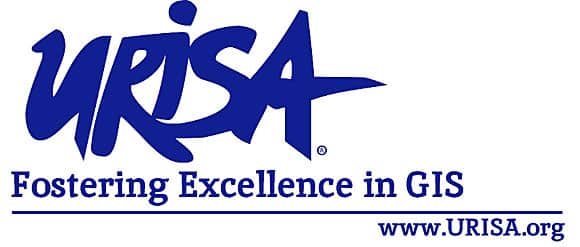When I think of the term enterprise GIS, I often think of the USS Enterprise from the popular American television series Star Trek. Many of the things GIS managers focus on are like stoking the matter-antimatter reactors with dilithium crystals to power the Enterprise. For GIS managers, maintaining data, filling in metadata, updating software, and customizing apps keep an organization’s enterprise GIS running smoothly.
But GIS managers have a responsibility to ensure that the key decision-makers up on the bridge and all the stakeholders who work within the enterprise know the value of GIS. Of course, GIS managers understand the benefits of the technology, whether they work for a local, state, provincial, or federal government agency; a nonprofit; or a private company. But elected officials, public works managers, company directors, warehouse supervisors, and budget analysts don’t necessarily get it.
If key decision-makers don’t know how GIS supports their business functions, then they need to be educated. That’s a job for GIS managers.
Core Competencies for Promoting GIS
Like any geospatial operation, promoting GIS requires a structured project management approach. The Geospatial Management Competency Model (GMCM) from the United States Department of Labor outlines specific competencies that are useful to employ when promoting GIS. These competencies include communication, relationship management, business development, and political skills.
Here are six ideas for how to apply some of these competencies:
-
Build a GIS brand. Well-known brands elicit feelings and expectations in current and potential customers. And that branding starts internally—in this case, within the GIS team. This isn’t about building general awareness of what GIS can do; the team already knows that.
Give the GIS team a name, and let the team members help choose it. On organizational charts, display the team name prominently—Enterprise GIS, Enterprise GIS Services, Enterprise GIS Center, or maybe something else. This helps evoke pride within the GIS team and institutes a sense of value in those who use GIS services. Design a logo and add it to maps, web pages, projects, and presentations.
-
Generate pride in the brand. This is especially important to do within the GIS team. Attending GIS user group meetings and putting on annual GIS Day events are great ways to spotlight geospatial professionals’ work. Encourage team members to participate in professional associations and conferences, and motivate them to pursue their GIS professional (GISP) and other certifications.
Brand awareness is achieved when team members and current and potential customers have a strong, positive, value-focused reaction whenever they hear a name like Enterprise GIS Services.
-
Communicate effectively. Clear communication is critical for GIS marketing and business development. Effective GIS managers need to be able to tailor their communications to various audiences. The jargon and acronyms used in team meetings have no place in communication with potential customers.
GIS managers can help construct appropriate and consistent messaging by developing a standard GIS value proposition presentation and slide deck. They can then train their team members to give the presentation and respond to customer questions in compelling and effective ways. This slide deck should become the core of any marketing presentation.
From that, GIS managers should develop an elevator pitch for GIS—a 90-second description of what the GIS department does. Team members can then give that pitch to colleagues they run into in the parking lot; hallway; or, perhaps, the elevator.
-
Establish effective relationships. This increases the visibility of GIS and promotes greater adoption of the technology. The goal of these relationships is to get more business units to adopt GIS tools and apps. For a business unit that is new to GIS, buy-in needs to happen at three levels: with the doers, with the supervisors or managers, and with the ultimate decision-makers.
Say the water utility at a city government would benefit from using GIS-based mobile data collection apps. The GIS manager will need to have relationships with a few of the people who gather and work with field data to gain an understanding of their work processes and show them how mobile GIS apps can make their jobs easier. The GIS manager will also need to have relationships with these employees’ bosses—the people in the enterprise who own the mobile data collection process. Finally, the GIS manager will need to have a relationship with the department director or the person who controls the budget. Here is where GIS brand awareness is very important. With positive GIS brand awareness throughout the enterprise, department directors and C-level leaders should already know that GIS delivers significant benefits.
Don’t forget to develop effective relationships with others who are not prospective GIS users as well, including the IT, budget, finance, operations, and human resources managers. It’s also important to get to know GIS managers in neighboring jurisdictions and fellow attendees at conferences or training classes. They can all advocate for GIS managers and help boost the GIS team’s brand.
-
Develop political skills. For GIS managers who work at public agencies, it can be tough to develop relationships with elected officials. But there are ways to do this. Make it a habit to look at council meeting agendas and minutes. Maybe attend some meetings to learn what the key issues and hot-button topics are for individual council members.
Perhaps at one meeting, council members were bombarded by residents complaining about potholes. That might open an opportunity to suggest a GIS-based pothole solution to the city’s maintenance supervisor the following morning. This will be especially helpful if the city council demands immediate action on the issue.
-
Become proficient in business development. GIS managers need to gain an understanding of the business development process and how to apply it on an ongoing basis. At private companies, nothing happens without marketing and business development. In fact, all the ideas above fall into the category of GIS marketing and business development.
The key to success in marketing and business development is to start with a simple plan. First, spell out the value of GIS in simple terms. This is the core of any GIS communications strategy. Next, outline target markets. Start with the company organizational chart and create a simple matrix that distinguishes different work units. Identify the units that are currently using GIS solutions, then pin down the ones that are prime candidates for new, GIS-based products, services, and apps. Finally, think about how to market GIS to those work units.
Some ideas might fit into the GIS team’s annual workflow, such as hosting a GIS Day event or giving GIS product demonstrations. Other ideas include creating a quarterly GIS newsletter or turning project closeout reports into compelling, mission-accomplished-with-GIS stories. Also, try to get on the agenda for management team meetings, especially those for work units that could benefit from investing in GIS. A more ambitious strategy would be to implement an internal customer relationship management (CRM) tool. This can help members of the GIS team share their interactions with current and potential customers to build comprehensive, dynamic relationships.
Additional Resources for GIS Managers
There are many great resources available to help GIS managers develop their brand and marketing competencies. Those include the following:
- Read The Path to GIS Success from Esri.
- Seek guidance from the Society for Marketing Professional Services.
- Join the Geographic Information Systems Professional Service Marketers group on LinkedIn.
- Consider attending the Urban and Regional Information Systems Association’s (URISA) GIS Leadership Academy.
- Study the Geospatial Management Competency Model.
Effective marketing and business development can help enterprise GIS “boldly go where no [GIS] has gone before!”



